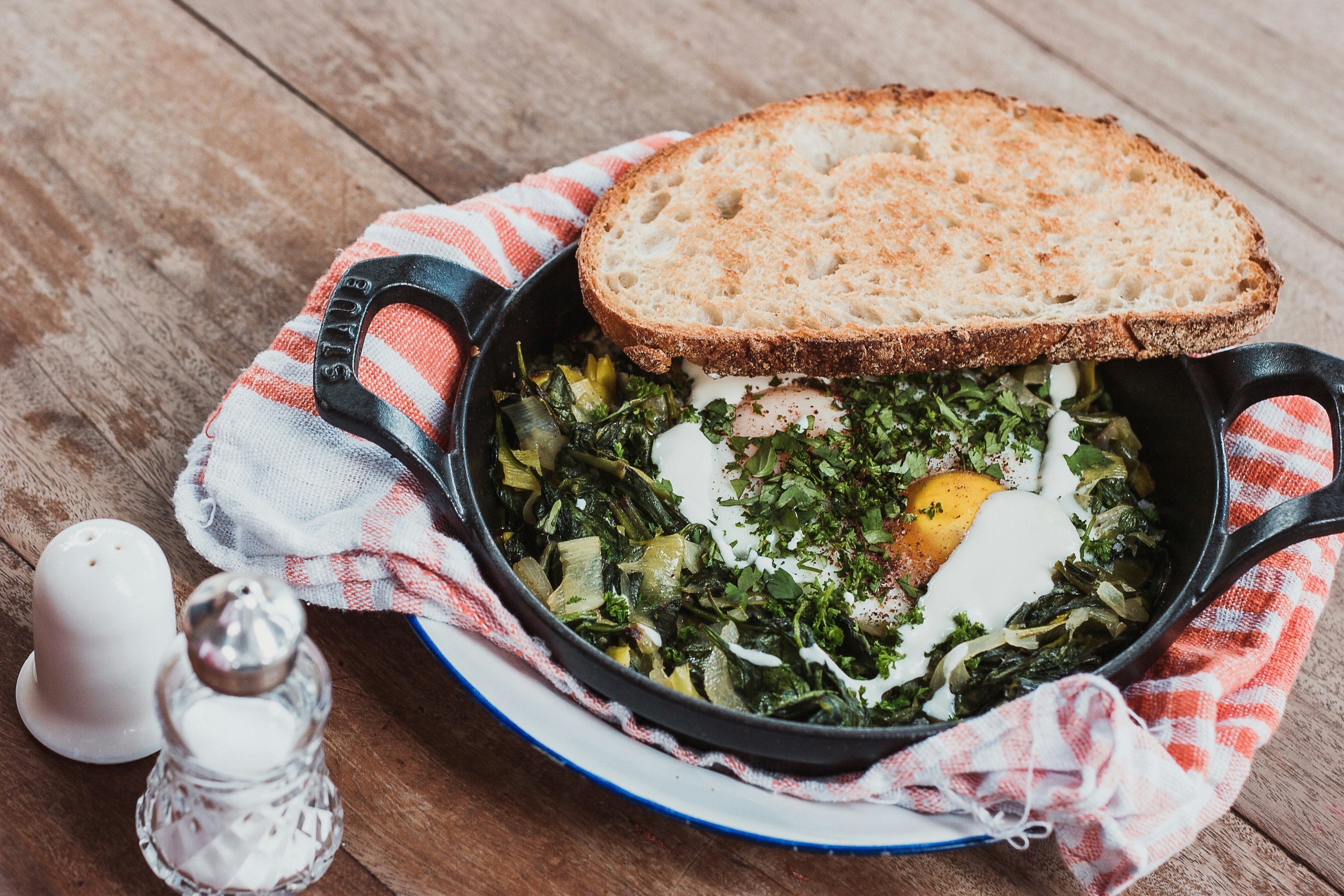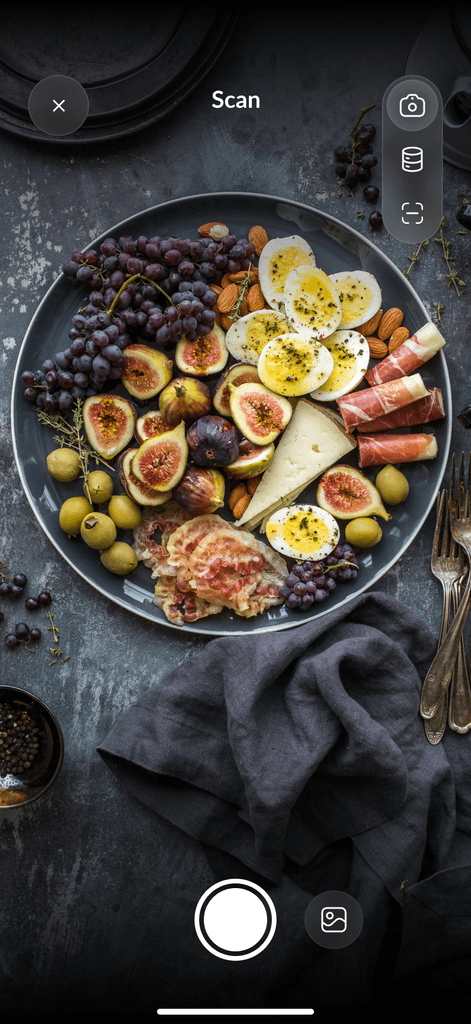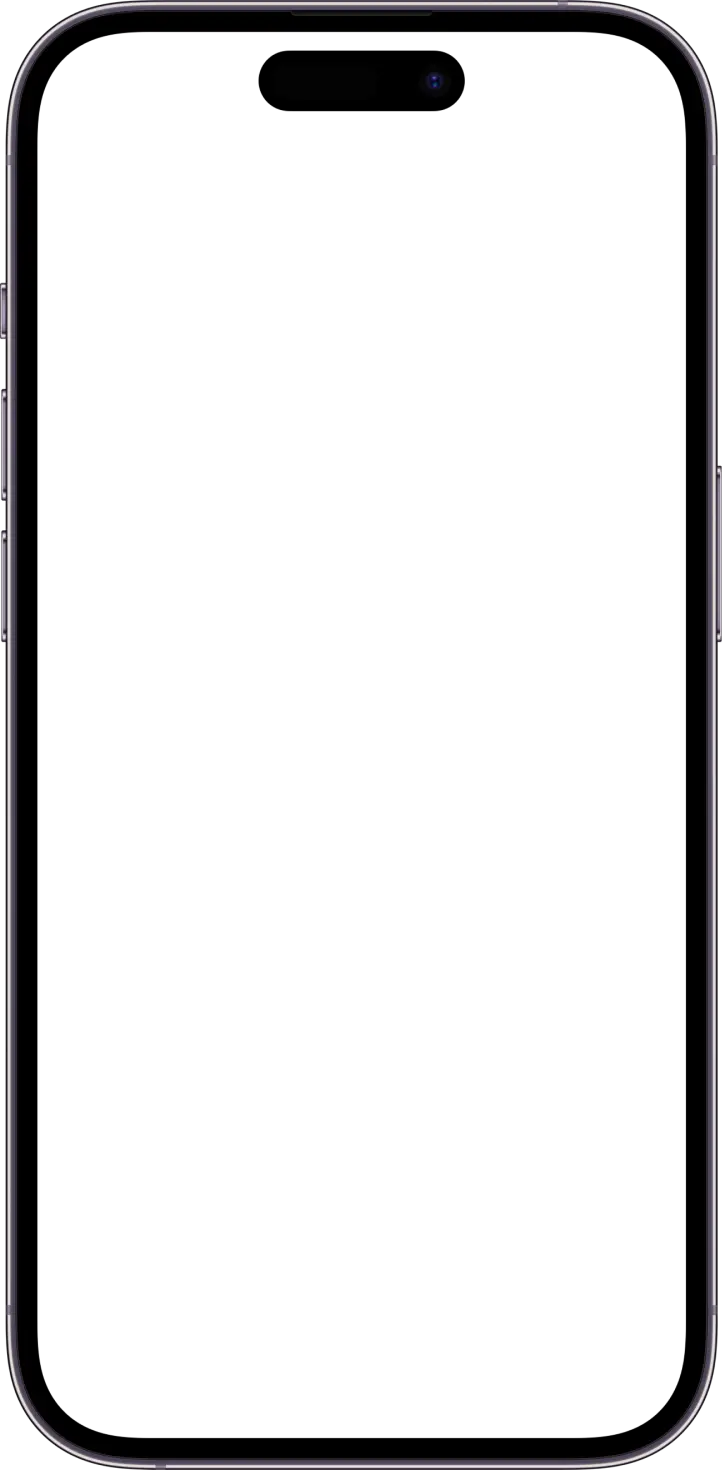Sticking to a calorie deficit can feel like an uphill battle. One day, you're cruising along, and the next, you're staring down a plate of nachos at a friend's party, knowing you should say no. If you're struggling to stay on track, you might even think a calorie deficit isn't for you.
Before you give up, consider that mastering the art of sticking to a calorie deficit will help you reach your goals faster and make the process easier and more enjoyable. This guide What are macros and micros will help you learn how to stick to a calorie deficit and offer valuable insights for your journey, like how to count calories faster with AI.
DietAI’s AI calorie counter can help you achieve your calorie-counting goals without the drudgery. This tool lets you scan barcodes, take pictures of your food, and log recipes to count your calories faster so you can get back to enjoying life.
Table of Content
Benefits of a Calorie Deficit

1. Boosting Insulin Sensitivity: Why Eating Less Matters for Blood Sugar Control
When you eat in a calorie deficit, your body uses stored fat for energy, which has been shown to improve insulin sensitivity. Improved insulin sensitivity reduces the risk of developing diabetes and other metabolic disorders. A diet heavy in heavily processed foods, refined carbohydrates, and saturated fats can stimulate insulin production, making it harder to lose weight.
2. Possible Increased Longevity
Recent animal studies found that calorie restriction can increase lifespan by 10%. More research is needed to confirm the same in humans, but the prospect of eating less to live longer is intriguing.
3. Reduced Inflammation
Calorie-deficient eating has been shown to reduce inflammation in the body, lowering the risk of chronic diseases such as heart disease and cancer when consumed with a nutrient-dense diet.
4. Improved Cardiovascular Health
Eating less helps lower blood pressure and may minimize the risk of developing heart disease.
Related Reading
• Do Minerals Have Calories
• How Long in a Calorie Deficit to See Results
• How to Use a Food Scale to Lose Weight
• Can You Eat Pizza on a Diet
• Do Carbs Make You Fat
• Why Am I Not Losing Fat in a Calorie Deficit
• What Are Net Calories
• Is the Fitness App Accurate
• How Many Calories Below Bmr to Lose Weight
How to Stick to a Calorie Deficit in 12 Ways

1. Use DietAI for Counting Calories
Trying to lose weight, gain muscle, or maintain a balanced diet? The DietAI app can help you achieve your goals. DietAI transforms calorie counting with our AI calorie counting app. Take a picture of your food, and our app instantly analyzes your meals from a simple photo, delivering accurate calorie and macro information without manual logging.
Beyond photo recognition, the app provides comprehensive progress tracking, personalized nutrition insights tailored to your goals, and convenient barcode scanning for packaged foods. Download now to effortlessly track your calories and macros with DietAI, the AI-powered app that makes logging meals as simple as snapping a photo. DietAI can help make nutrition tracking effortless by eliminating the tedious aspects of traditional food journaling. Download today for 80% off!
2. Swap Your Snack
Many people reach for a snack or two in between meals. Snacking is fine if you choose options that will fill you up with fewer calories. The key is to have some healthy snacks ready when hunger hits. Instead of a 3-ounce (85 g) bag of flavored tortilla chips (425 calories), choose a cup (240 mL) of air-popped popcorn (31 calories), a cup (240 mL) of grapes, and a low-fat cheese stick or a small apple and 12 almonds (80 calories). Choosing healthy snacks twice a day will easily save you 500 calories.
3. Cut One High-Calorie Treat
Try to remove one high-calorie food item each day. Whether it is a donut in the morning, a brownie or bag of chips at lunch, or chocolate cake after dinner, you will save 250 to 350 calories or more. To burn another 150 calories, take a 40-minute brisk walk after lunch or dinner.
4. Do Not Drink Your Calories
One 12-ounce (355 mL) regular soda has about 150 calories, and a 16-ounce (475 mL) flavored latte can pack 250 calories or more. Even fruit smoothies have many calories, as many as 400 in a 16-ounce (475 mL) serving. A few sweet drinks a day can easily add up to 500 calories. Choose plain or flavored, sparkling water, or black coffee or tea instead, and save calories for foods that will help you feel full.
5. Skip Seconds
Taking a second helping can add up to unwanted calories. It is easy to keep filling your plate when you serve food family style on the table. Instead, fill your plate once and keep extras in the kitchen. Or, if you still do not feel satisfied, add a second helping of vegetables, fruit, or salad.
6. Make Low-Calorie Substitutions
Substitute lower-calorie options for some of your high-calorie favorites. For example, if a recipe calls for a cup (240 mL) of sour cream (455 calories), use a cup (240 mL) of plain low-fat yogurt or Greek yogurt instead (220 calories).
7. Ask for a Doggie Bag
The portions at many restaurants are much larger than recommended serving sizes. Instead of cleaning your whole plate, ask the server to put half in a container for you to take home for another meal. You can also share an entrée with a friend, or make a meal from an appetizer and a large salad. Just be sure to go easy on the dressing and fried toppings.
8. Just Say "No" to Fried Food
Frying food can add many unhealthy calories and saturated fat to any dish. Instead of fried chicken or fish, choose grilled, broiled, or poached instead. And skip the French fries. A large serving of fries alone can add almost 500 calories to a meal. Instead, see if you can substitute the day's vegetable or a side salad.
9. Build a Thinner Pizza
Skip the meat toppings, extra cheese, and deep-dish crust, and have a couple of slices of thin-crust vegetable pizza instead. You will save a little over 500 calories.
10. Use a Plate
Eat all food from a plate or bowl, including snacks. Snacking out of a bag or box makes eating easier than you intend. This is especially true if you are sitting in front of the TV. You may be surprised that a large bag of chips could be more than 1000 calories. Instead, place one portion in a bowl, and put the rest away.
11. Avoid Alcohol
Cutting back on alcohol is an easy way for many people to trim calories. Alcohol does not have any nutritional value, so when you imbibe (drink) alcohol, you are getting empty calories, up to 500 for some mixed drinks made with syrupy sweeteners, fruit juices, and ice cream or heavy cream. If you do order a drink, choose a 12-ounce (355 mL) light beer (103 calories) or a 5-ounce (145 mL) glass of wine (120 calories).
12. Focus on Nutrient-Dense Foods
To stay in a calorie deficit without feeling deprived, prioritize nutrient-dense, low-calorie foods that provide essential vitamins and minerals.
These include
Vegetables and Fruits: High in volume and fibre, they keep you full for fewer calories.
Lean Proteins: Chicken, fish, tofu, and legumes help build and repair tissues.
Whole Grains: Brown rice, quinoa, and oats offer long-lasting energy.
Eating high-volume, low-calorie foods like leafy greens, broth-based soups, and berries can help you feel satisfied while staying within your calorie budget.
How to Calculate Calorie Needs

Calorie Needs 101: How to Calculate Your Daily Caloric Needs
There are several methods to determine how many calories you burn daily. You can manually calculate your daily calorie needs or find an online calculator. To manually calculate your current body weight, multiply it by 15 to estimate how many calories you need daily. Anything less than this is a deficit.
Basal Metabolic Rate: The Starting Point for Calorie Needs
People can also use their basal metabolic rate (BMR) and activity levels to determine their caloric needs. They can use the following formula to estimate their BMR:
Adult male: BMR (kcal/day) = (10 × weight in kg) + (6.25 × height in cm) – (5 × age in years) + 5
Adult female: BMR (kcal/day) = (10 × weight in kg) + (6.25 × height in cm) – (5 × age in years) – 161
Once a person has their BMR, they can use one of the following formulas, based on their activity levels, to determine their caloric need:
Sedentary: little or no exercise = BMR x 1.2 Minimally active: 1–3 days per week of exercise or activity = BMR x 1.375
Moderately active: 3–5 days per week of moderate activity or sports = BMR x 1.55
Very active: 6–7 days per week of strenuous exercise = BMR x 1.725
Extra active: athletes who train twice daily = BMR x 1.9.
People can also ask their doctor or nutritionist for the most accurate caloric intake estimates. These professionals can tailor the forecast based on the person and their lifestyle.
DietAI transforms calorie counting with our AI calorie counting app. Take a picture of your food, and our app instantly analyzes your meals from a simple photo, delivering accurate calorie and macro information without manual logging. Beyond photo recognition, the app provides comprehensive progress tracking, personalized nutrition insights tailored to your goals, and convenient barcode scanning for packaged foods.
Whether you are trying to lose weight, gain muscle, or simply maintain a balanced diet, DietAI makes nutrition tracking effortless by eliminating the tedious aspects of traditional food journaling. Download now to effortlessly track your calories and macros with DietAI, the AI-powered app that makes logging meals as simple as snapping a photo. Download today for 80% off!
Related Reading
• Carnivore Macros for Weight Loss
• How to Track Calories When Eating Out
• Weight Watchers vs Calorie Counting
• Macros for Mediterranean Diet
• Losing Weight and Gaining Muscle
• How to Track Alcohol Macros
• Macros for 1200 Calorie Diet
• Intermittent Fasting and Macros
• Macros for Pcos Weight Loss
• Paleo Macros
How to Count Calories

1. Transform Calorie Counting with DietAI
Calorie counting just got a whole lot easier. Meet DietAI, the app that makes tracking your calories and macros a snap. Simply take a picture of your food, and our powerful app instantly analyzes your meal from the photo, delivering accurate calorie and macro information without tedious manual logging.
Beyond photo recognition, DietAI provides comprehensive progress tracking, personalized nutrition insights tailored to your goals, and convenient barcode scanning for packaged foods. Whether trying to lose weight, gain muscle, or simply maintain a balanced diet, DietAI makes nutrition tracking effortless by eliminating the tedious aspects of traditional food journaling. Download today for 80% off.
2. Figure Out Your Calorie Needs
Estimating your calorie needs is a great place to start when counting calories. Four main formulas can be used to calculate calorie requirements. My preferred method is the Mifflin-St. Jeor Formula.
Frankenfield et al. conducted a systematic review, comparing all four of the most commonly used equations and finding Mifflin-St. Jeor was the most accurate. I have used this formula on myself and various clients throughout my 10 years as a personal trainer, and so far, it hasn’t let me down.
The Formula
Male: (10 x weight kg) + (6.25 x height cm) – (5 x age) + 5
Female: (10 x weight kg) + (6.25 x height cm) – (5 x age) – 161
Example
Alex is a 30-year-old 80kg male at 180cm in height: (10×80) + (6.25 x 180) – (5×30) + 5 = 1,780
3. Factor in Your Activity Level
The above number is calculated for the version of yourself that does not exercise at all—zero. This is why you now need to factor in the calories you burn. Someone more active will need more calories each day, and vice versa for someone less active. Multiply your total calorie requirements (Step 1 total) by one of the points below that best aligns with your everyday activity level.
Activity Levels
Sedentary (little or no exercise, desk job) x 1.2
Lightly active (light exercise/sports 1-3 days/week) x 1.3-1.4
Moderately active (moderate exercise/sports 3-5 days/week) x 1.5-1.6
Very active (hard exercise/sports 6-7 days per/week) x 1.7-1.8
Extremely active (very hard daily exercise/sports & physical job or twice a day training) x 1.9-2.0
Example
Alex trains 4 times per week (moderately active), so to calculate his daily calories, we need to multiply his required calorie count, 1,780, by 1.5-1.6. For this example, we will choose 1.6 because Alex sometimes trains a little more than 4 times per week: 1,780 x 1.6 = 2,848 calories (this would be our approximate maintenance calories)
4. Setting Macronutrient Targets to Meet These Calories
Now you know how many calories you need daily if you maintain the same activity level. The next step is to set mini targets (protein, carbohydrates, and fat) in your total calorie target.
Protein Targets
Protein-rich food:
Standard requirement: 2-3 grams of protein per kilogram of body weight
Muscle growth requirement: 2-2.5 grams of protein per kilogram of body weight
Fat loss requirement: 2.5-3 grams of protein per kilogram of body weight
There are 4 calories per 1 gram of protein, so you must multiply your total grams of protein by 4 to calculate your calorie intake.
Example 1
Alex wants to lose fat and grow muscle, so the equation we would use for him is 2.5 x 80 (bodyweight) = 200 grams of protein (x4 = 800 calories). If you are on a journey to a specific weight, calculate your protein based on your goal weight, not your current weight.
(See my article on creating a weight-loss diet plan here.)
Fat Targets
There are nine calories per 1g of fat, so when calculating your calorie intake, you must multiply your total grams of fat by 9. The standard requirement is 0.7- 1.1g of fat per kilogram of body weight.
Example
Based on the foods Alex enjoys eating (e.g., avocados, nuts, trimmed bacon), he is closer to a diet that is higher in fa,t which is why we’ll choose the higher amount (1g) to calculate his calories: 1 x 80 = 80g of fat (720 calories).
Carbohydrate Targets
Fill in the rest of the calories remaining with carbohydrates. There are 4 calories per 1 gram of carbohydrates, so when calculating your calorie intake, you must multiply your total grams of carbohydrates by 4.
Example
Alex has 2,848 calories in total. He’s used up 800 on protein and 720 on fat, so he has 1,328 calories left. Divide the remaining calories by 4 to determine how many carbohydrates you can include in your diet: 1,328 divided by 4 = 332 grams.
Download DietAI Today for 80% Off!
Regarding nutrition, two types of nutrients matter most: macronutrients and micronutrients. Macronutrients, or macros, are the nutrients your body needs in large amounts to provide energy and support overall health. The three main types of macronutrients are carbohydrates, proteins, and fats.
Each serves a unique purpose in the body and contains calories—substances that fuel the body. Micronutrients, or micros, are vitamins and minerals that support numerous bodily functions, including metabolism, immune function, and bone health. Unlike macros, micros don’t provide energy (calories). Instead, they help the body utilize energy from macronutrients and perform optimally.
DietAI transforms calorie counting with our AI calorie counting app. Take a picture of your food, and our app instantly analyzes your meals from a simple photo, delivering accurate calorie and macro information without manual logging. Beyond photo recognition, the app provides comprehensive progress tracking, personalized nutrition insights tailored to your goals, and convenient barcode scanning for packaged foods.
Whether you are trying to lose weight, gain muscle, or simply maintain a balanced diet, DietAI makes nutrition tracking effortless by eliminating the tedious aspects of traditional food journaling. Download now to effortlessly track your calories and macros with DietAI, the AI-powered app that makes logging meals as simple as snapping a photo. Download today for 80% off!
Related Reading
• Vegan Macros
• Endomorph Macros for Fat Loss
• Hitting Macros but Not Calories
• Ketosis vs Calorie Deficit
• Macros for Menopause Weight Loss
• Macros for Bariatric Patients
• Nutracheck vs Myfitnesspal
• Noom vs Myfitnesspal
• MacroFactor vs Carbon


